In this episode, host Peterson Toscano guides us through an exploration of the role forests play in addressing the causes and impacts of climate change, both in urban and rural settings. Six guests provide personal narratives, expert insights, and actionable strategies that will inform and inspire climate advocates. This episode also delves into Pennsylvania’s rich forest history, from its old-growth forests to modern-day conservation efforts, highlighting the legacy of sustainable stewardship by its original inhabitants.
Toscano notes, “PA has a legacy of being one of the more heavily-wooded states in the USA… But If you walk through the over 15 million acres of forests in Pennsylvania, only 1% of that is original old growth forest.” This fact highlights the dramatic changes our landscapes have undergone and the need for renewed focus on forest conservation.
Creating a Campus Food Forest
If you want to make a difference on your own campus or in your community, students at Allegheny college have an answer for you. A Food Forest. Ashlynn Peachey, Nicholas Waddington, and Katie Mowry, students at Allegheny College talk about their pioneering Food Forest project.
Ashlynn Peachey: “It really started when one student years ago came to Allegheny College with a passion for permaculture… We like to look around the college landscape and see, not what it is, but what it can be.” That student, Sebastian McRae, helped to found a campus Sustainable Design Team.
Nicholas Waddington, describes their project: “A food forest is a diverse planting… it provides a lot of climate and ecosystem services.” He emphasizes the symbiotic relationship between different plant species and their collective role in enhancing ecosystem health.
It was at the Northeast Student Farmer Conference held at Penn State University that CCR host, Peterson Toscano attended the students’ breakout group about their successes in building campus support for the Food Forest. During the presentation they explain the steps they took to engage stakeholders, to design the Food Forest and to follow through once the project was approved. Their story is a testament to the power of collaborative efforts and the importance of gaining community support.
Nicholas Waddington: “From our combined years of engagement with this project, we’ve really taken away that climate and campus resilience is hugely community-driven… We’re stronger and more productive when we work together.”
In this episode you will learn about sustainable agriculture and permaculture (a word Bill Mollison coined) and how you can replicate their success on your own campus or community.
Raising the Awareness of a Healthy Forest Sustainability Legacy and our Responsibility Today
Former forester and coal miner, Van Wagner, now teaches Agriculture Science at the Area High School in Danville, Pennsylvania. He is also a singer/songwriter and storyteller. Van Wagner offers a historical perspective, emphasizing the longevity of sustainable practices.
“I laugh when I read in my textbook, and in the textbook it says that the environmental movement began in 1970 with the first Earth Day… That’s not when it started. My German ancestors here in the Susquehanna River Valley, they knew about sustainability, you didn’t ruin the family farm, you didn’t cut all the trees down.” -Van Wagner
In order to increase efforts to maintain and protect forests in the US Commonwealth of Pennsylvania, Van has committed himself to visiting the highest point in the 67 counties and climbing the tallest tree he can find. Van explains, I’m trying to get the press’s attention. And when they stick a microphone in my face, I talk about trees and forestry.”
You can follow his progress on the site Van Wagner Highest Climbs. Also, see him climbing in videos on his YouTube channel.
Expanding the Legacy of Tree Growing in Small Country Towns and Big Cities
Taylor Lightman grew up in the Borough of Lewisburg, Pennsylvania, (population 5232) “a delightfully cozy little town nestled on the banks, the Susquehanna River, one of the oldest river valleys in the world, older than the Nile.” He then went to college in Northfield, Minnesota and then to grad school in Lund, Sweden where he completed a Master’s in disaster risk management and climate change adaptation.
Today Taylor is the program Manager for Lewisburg Neighborhoods. He says, “I’m trying to figure out a way to do climate smart neighborhood revitalization. I think there’s no better place to do that than in one’s hometown”
In this episode Taylor talks about the importance of growing trees in towns and cities.
“Trees are doing a lot of things for us. Streets with trees on them, the shops do better…people are driving on streets and roads with trees, they behave less aggressively too.”
His insights reveal the extensive benefits of urban trees beyond just environmental impact.
Dana Nuccitelli considers the question: what are the different ways we would benefit from planting more trees in cities and towns? This question is critical to CCLs healthy forest policy area. In regards to addressing the causes of climate change, Dana says, “Planting more urban trees in the U.S. has the potential to capture up to 100 million tons of carbon dioxide pollution per year.”
But wait, there’s more! Urban tree planting offers multifaceted benefits, enhancing climate resilience, physical and mental health, and fostering active lifestyles and community well-being.
And there is important work for us to do. Dana says,
“But while people in communities with more trees live longer, happier, healthier lives on average, America has a tree inequity problem. Communities of color have 33% less tree canopy on average than majority white communities.”
To learn more Dana encourages you to visit Check TreeEquityScore.org to see where tree planting would be the most effective in your community to remedy this tree inequity problem.
Check out Dana’s recent post about The little-known physical and mental health benefits of urban trees. Keep up to speed with climate science, policy, and economics research by visiting The Nerd Corner website.
Take a Meaningful Next Step
Are you someone who wants to see legislation passed to protect, maintain, and promote healthy forests? That is exactly what we are doing through Citizens’ Climate Lobby. One of the four climate solutions we pursue is healthy forests. We need your voice to be part of the movement that is promoting healthy forests. Here are 10 steps you can take to make to address the causes and impacts of climate change.
Ten meaningful steps you can take to promote healthy forests
- Learn about Citizens’ Climate Lobby’s Healthy Forests Climate Solutions and take the Healthy Forests Beginners or Advanced online training sessions. You can also read and share the article, Why are forests important for mitigating climate change?
- If you are a college student, visit Citizens’ Climate Lobby’s Higher Education Team’s Actions Page. Learn about the College #CarbonFeeAndDividendMovement.
- Participate in Community Tree Planting Events: Engage in local tree planting initiatives or donate to tree planting efforts. If you live in Pennsylvania, check out 10 Million Trees.
- Volunteer for Urban Forestry Projects: Support urban forestry projects in your community. Check out American Forests for volunteer opportunities.
- Advocate for Tree Equity: Work towards ensuring that all communities, especially underprivileged ones, have equal access to tree canopy benefits.
- Educate Yourself and Others: Learn more about the benefits of urban trees and share this knowledge. The Arbor Day Foundation provides educational resources.
- Support Local Sustainability Initiatives at Schools and Universities: Encourage and participate in sustainability projects. Contact local educational institutions to find out how you can help.
- Engage in Community Science Projects: Participate in local environmental monitoring and research. Platforms like iNaturalist offer opportunities for citizen science.
- Promote and Support Local Green Spaces: Advocate for the maintenance and development of green spaces in urban areas. Collaborate with local parks departments or environmental groups.
- Implement Permaculture Practices in Your Community: Start or join a permaculture project to promote sustainable land use. Resources and guides are available at Permaculture Research Institute.

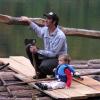


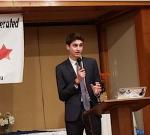
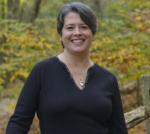
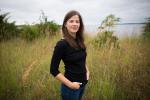





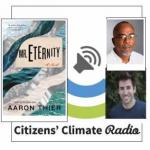


Add new comment